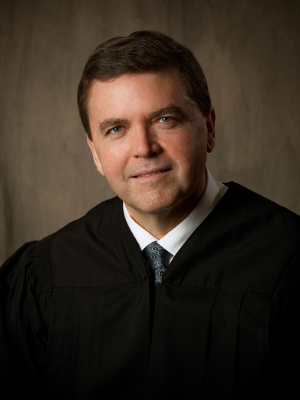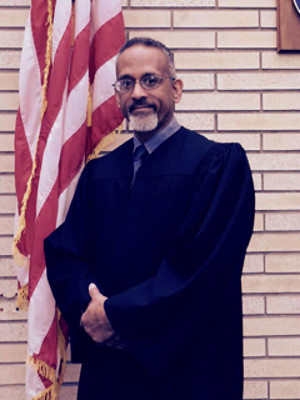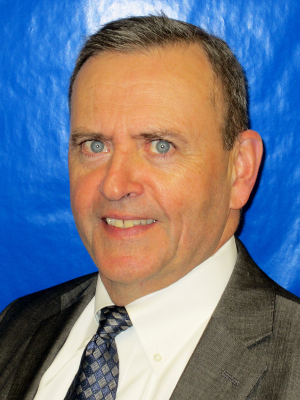 The Honorable Charles M. Zennaché, Lane County Circuit Court
The Honorable Charles M. Zennaché, Lane County Circuit Court
Whenever you try a case, there are several target audiences of whom you need to be aware. There are the usual primary target audiences: the judge and the jury. There may also be secondary targets, such as the person paying your fees or the court of public opinion. The potential target audience that is often forgotten is the appellate courts.
As we all know, resources are stretched thin in our state courts. In Lane County, where I serve, very few cases proceed to trial with the benefit of a court reporter. As a result, transcriptionists must later transcribe the audio recording from trial for the appellate courts’ review. Those transcriptionists and the appellate courts must therefore rely on trial attorneys and judges to ensure a clear and well-preserved record for appeal.
Unfortunately, I regularly see trial attorneys fail to take the steps necessary to ensure a good record for appeal. Preserving your record for appeal requires more than jumping through procedural hurdles like taking exceptions and making offers of proof, although those things are important and are briefly addressed below. The tips below are intended to provide reminders to trial attorneys for making a good record for appeal. Following these tips may also help you communicate effectively with your primary target audiences.
1. Identify yourself and the party you represent.
I find that I often have to ask attorneys to state their names for the record. This is not because I have a bad memory. You should always state your name and who you represent so the record is clear. And if you represent more than one client in a single docket (show cause or probation violations, for example), state your name each time you speak on behalf of a different client.
2. Speak only when you are near a microphone.
In Lane County, we do not have particularly sophisticated recording devices. Rather, our microphones are aged and they do little to amplify proceedings. As a result, it is easy for lawyers to forget the need to be near a microphone when speaking. During opening statements, for example, lawyers often address the jury from the well. While I encourage attorneys to move about the courtroom freely, I also urge you to be aware of the location of microphones in the courtroom and to speak only when you are near a microphone. If you decide to move away from one of the microphones on counsel table, make sure you move to someplace near one of the other microphones in the room. If you (or a witness) are not picked up by a microphone, then the important things you (or the witness) said will not be part of the record on appeal.
3. Don’t be afraid to move the microphone.
The judge and court staff may not notice that a microphone needs to be moved. For example, during voir dire, I typically have the jury box and witness box microphones pointed toward the potential jurors since they are responding to questions during that part of the proceeding. When counsel begins their opening statements, however, those microphones should be pointed toward the well. If you notice that a microphone needs to be moved, ask the court if you can move it to ensure a good record for appeal.
4. Make sure questions are answered orally.
Although people may naturally respond to a question by nodding or shaking their heads, that response is not adequate for the record. Since we no longer have court reporters to note that the witness nodded his head or shook her head, it is important to make the record clear as to whether, for example, a witness answers “yes” or “no.” While I try to make sure that the intention behind nods or shaking heads are clarified orally on the record, I don’t always catch them. Help yourself by making sure that the answer to every question is oral.
5. Provide detailed descriptions of visuals.
Similar to the need to clarify non-verbal answers, you should remember to provide an oral description of any gestures or use visual aids provided at trial. For example, if your witness has pointed to a spot on a map in the courtroom, you should describe the area of the map to which the witness has pointed for the record. If the witness gestures as part of her answer, describe the gesture. This is not a time for advocacy; fairly describe what the witness has done, don’t add to it. As a trial attorney, you must ensure that the audio recording clearly and adequately reflects any visual provided at trial.
6. Make sure people speak up.
Okay, so the witness answered orally. Good enough? Not if the answer was so low that the record could not pick it up. If you have a witness who is having trouble speaking up, ask him or her to lean in close to the microphone. Also, remember that it is natural for people to raise or lower their voices depending on how close they are to each other. Thus, when you approach the witness to ask her questions, her natural tendency will be to lower her volume, which presents problems for the record, judges, and jurors. Likewise, whenever you ask the witness to step down form the witness stand and enter the well, have her speak up loudly.
7. Clearly and consistently identify documents.
Sometimes it seems that the days of formal document identification have faded even though the need for such formality remains. For some attorneys, the problem may be rooted in trial preparation (or a lack thereof). In that case, the cure is basic: Come to court prepared. Label exhibits before your trial date. Whenever you hand a witness a document (except perhaps those used to refresh recollection), note for the record that you are handing the witness the document marked as Exhibit X. Continue to identify all documents by their preassigned numbers throughout the trial even if the document is never offered or received. Remember: exhibits do not have to be received in sequential numeric order and numbers can be skipped. Once an exhibit has been introduced into the record (note I did not say received), do not give that number to any other document. If the parties stipulate to the admission of an amended version of a document, give that document a different number (for example, 104A).
8. Be aware of noise you or your client may inadvertently be making on the record.
The recording device is not always your friend. It often seems to miss things that are important but clearly picks up things that are not. Rustling pages, coughs and sneezes, and even the sound of a pen against paper can sometimes be heard more clearly than, for example, a star witness’s testimony. Just as you need to be certain that you are near a microphone when speaking, you must be aware of the noises you make while near a microphone when you are not the speaker.
9. Use the “mute” button.
Again, the recording device is not always your friend. I am often amazed by the things it fails to pick up, but I am even more surprised by the things that it does. At times, exchanges between an attorney and his or her client that would otherwise be confidential are clearly audible because the attorney failed to hit “mute.” In one proceeding, I was even able to hear an attorney counsel his client as to the reasons my ruling was wrong and his appeal rights while I ruled from the bench. There is a “mute” button at the base of your microphone at counsel table. Use it, and advise your client to use it. If you don’t, you may well be waiving the attorney-client privilege.
10. Conserve video and audio aids presented at trial.
Two tips for effectively conserving video and audio aids on the record: First, if you play a video or audio aid that you do not intend to offer as an exhibit, consider offering it as a court exhibit instead. That way, the aid is received by the court as a part of the record (and thus can be reviewed later by an appellate court), but the jury will not have it during deliberation. Second, never try to talk over an audio or visual aid. There are times when attorneys ask a witness to describe what the jury is seeing or hearing while playing video or audio. Be sure to hit “pause” before speaking or asking a witness to speak. This may take longer, but it will be a great benefit to the record.
Related to this point is the need to make sure the exhibit you offer into the record either contains only that which is received, or that the record is clear as to which portion of the exhibit is being received. What I am talking about here are disks that contain multiple files (only some of which are received into evidence) and disks that contain the full files when only a portion is received into evidence. Make sure the record is clear as to what has and what has not been received.
11. Make an offer of proof.
While I don’t want to get into an exhaustive discussion on this topic, I do want to encourage you to make an offer of proof if you truly think the trial court is wrong. Be polite and mindful of the jury, and ask the court if you can do it later during a scheduled break, but do do it. You might even be surprised; the trial judge could change his or her mind after hearing the offer.
12. Take exceptions to instructions.
You have been in trial for weeks and you have spent hours on the record arguing with opposing counsel about the jury instructions. After reading the instructions, the judge turns to you and asks, “Any exceptions?” You stand and say, “Nothing other than those I mentioned earlier.” Have you preserved anything for appeal? Probably not. ORCP 59 H(1) requires that you take exceptions to the instructions “immediately after the court instructed the jury or at such other time as the trial court directed.” Argument about instructions earlier is not the same thing as an exception to the instruction as given. Don’t confuse this requirement with the provision in ORCP 59 H(2), which allows you to incorporate by reference the points you previously “made with particularity.” That just means you can incorporate those points by reference, not that you don’t have to take an exception.
As a trial judge, I try to make sure people get their day in court. I make sure that trial is fair and is conducted in accordance with the rules and the law. I try to rule promptly on matters and to explain my rulings. My goal in all of this is to have a final resolution of the dispute. By so doing, I hope to make the parties be accepting of the outcome and thereby allow them to move on with their lives. That should be your goal, too, but we must always be mindful of the record and how clear it will be if an appeal follows.
 The Honorable David Brewer, Associate Justice, Oregon Supreme Court
The Honorable David Brewer, Associate Justice, Oregon Supreme Court The Honorable John V. Acosta, United States Magistrate Judge, District of Oregon
The Honorable John V. Acosta, United States Magistrate Judge, District of Oregon The Honorable Mustafa Kasubhai, Circuit Judge, Lane County Circuit Court
The Honorable Mustafa Kasubhai, Circuit Judge, Lane County Circuit Court Judge Thomas Hart, Circuit Judge, Marion County Circuit Court
Judge Thomas Hart, Circuit Judge, Marion County Circuit Court